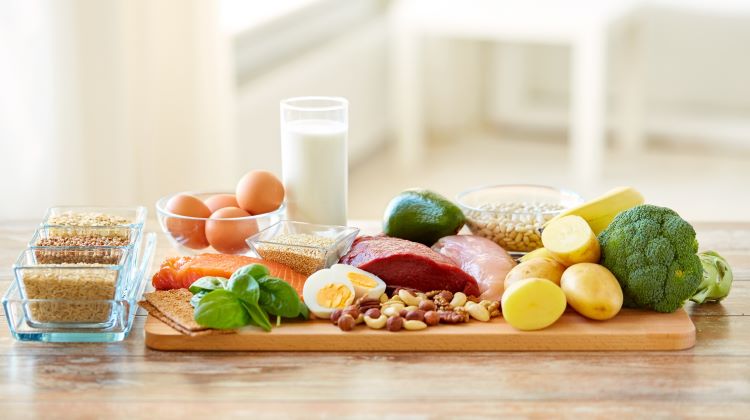Understanding Foods That Support Blood Sugar Management
Managing blood sugar levels is essential for individuals with diabetes or those at risk of developing the condition. The foods we consume directly impact glucose levels in the bloodstream, making dietary choices a cornerstone of effective diabetes management. By understanding which foods support stable blood sugar and incorporating them into daily meals, individuals can significantly improve their health outcomes and quality of life while living with diabetes.

An Overview of Dietary Approaches Related to Diabetes
Dietary management forms a crucial component of diabetes treatment and prevention. Several evidence-based approaches have shown effectiveness in controlling blood sugar levels. The Mediterranean diet, emphasizing vegetables, fruits, whole grains, fish, and olive oil, has demonstrated positive outcomes for blood glucose management. Similarly, the DASH (Dietary Approaches to Stop Hypertension) diet, originally designed for blood pressure management, provides benefits for diabetes through its focus on fruits, vegetables, and limited refined carbohydrates.
Low-carbohydrate approaches have gained attention in diabetes management circles as well. By restricting carbohydrate intake to varying degrees, these diets can help reduce post-meal blood glucose spikes. The American Diabetes Association acknowledges that no single eating pattern works for everyone with diabetes, instead suggesting personalized approaches based on individual health needs, preferences, and metabolic responses.
Insights Into Food Choices and Blood Sugar Control
The glycemic index (GI) and glycemic load (GL) provide valuable frameworks for understanding how different foods affect blood sugar levels. Foods with a high GI, such as white bread, white rice, and sugary beverages, cause rapid blood sugar spikes. In contrast, low-GI foods like beans, lentils, non-starchy vegetables, and most fruits lead to more gradual increases in blood glucose.
Fiber-rich foods play a particularly important role in diabetes management. Soluble fiber, found in oats, barley, legumes, and certain fruits, forms a gel-like substance during digestion that slows carbohydrate absorption, leading to more stable blood sugar levels. Insoluble fiber, prevalent in whole grains and vegetables, supports digestive health and contributes to overall metabolic improvement.
Protein sources also deserve careful consideration. Lean proteins from fish, poultry, beans, and tofu provide essential nutrients without significantly impacting blood glucose. Furthermore, incorporating healthy fats from sources like avocados, nuts, seeds, and olive oil can improve insulin sensitivity when replacing saturated fats in the diet.
What to Know About Nutrition and Diabetes Management
Portion control remains fundamental to blood sugar management, regardless of food choices. Even nutritious, low-GI foods can elevate blood glucose if consumed in excessive amounts. Learning appropriate serving sizes helps maintain stable glucose levels while ensuring adequate nutrition. Many diabetes educators recommend the plate method—filling half the plate with non-starchy vegetables, one quarter with lean protein, and one quarter with carbohydrates—as a simple visual guide.
Meal timing and frequency also impact glycemic control. Consistent meal schedules help maintain stable blood sugar levels throughout the day. Some individuals benefit from eating smaller, more frequent meals, while others do well with three structured meals. Working with healthcare providers to determine optimal meal patterns based on medication schedules, daily activities, and personal preferences proves valuable for many people managing diabetes.
Hydration choices significantly influence blood sugar management as well. Water remains the ideal beverage for maintaining hydration without affecting glucose levels. Unsweetened tea and coffee can be enjoyed in moderation, while sugary drinks, including fruit juices and regular soda, should be limited or avoided due to their high sugar content and minimal nutritional value.
Beneficial Foods for Blood Sugar Regulation
Certain foods demonstrate particular benefits for blood sugar management. Non-starchy vegetables like leafy greens, broccoli, peppers, and cauliflower provide essential nutrients with minimal impact on blood glucose. Berries offer antioxidants and fiber while having a lower glycemic impact than many other fruits. Legumes, including beans, lentils, and chickpeas, deliver a powerful combination of protein and fiber that helps prevent post-meal blood sugar spikes.
Whole grains like quinoa, barley, and steel-cut oats contain fiber and nutrients that support gradual glucose release compared to their refined counterparts. Nuts and seeds provide healthy fats, protein, and fiber that help moderate blood sugar levels when consumed in appropriate portions. Fermented foods such as yogurt with active cultures may improve gut health, potentially enhancing insulin sensitivity and glycemic control over time.
Building Sustainable Eating Patterns for Diabetes
Creating sustainable eating habits represents perhaps the most crucial aspect of nutritional management for diabetes. Rather than focusing on short-term restrictive diets, diabetes educators increasingly emphasize building realistic, enjoyable eating patterns that support blood sugar management while enhancing overall health.
This approach involves identifying personally meaningful food traditions, taste preferences, and lifestyle factors that influence eating behaviors. Gradual modifications to existing habits often prove more sustainable than dramatic dietary overhauls. For instance, someone might begin by replacing refined grains with whole grain alternatives several times weekly, gradually increasing the frequency as the change becomes habitual.
Working with registered dietitians who specialize in diabetes care can provide invaluable guidance in developing individualized eating plans that balance blood sugar management goals with quality of life considerations. These professionals help navigate real-world challenges like dining out, special occasions, and food budget constraints while maintaining focus on blood sugar management.
This article is for informational purposes only and should not be considered medical advice. Please consult a qualified healthcare professional for personalized guidance and treatment.




